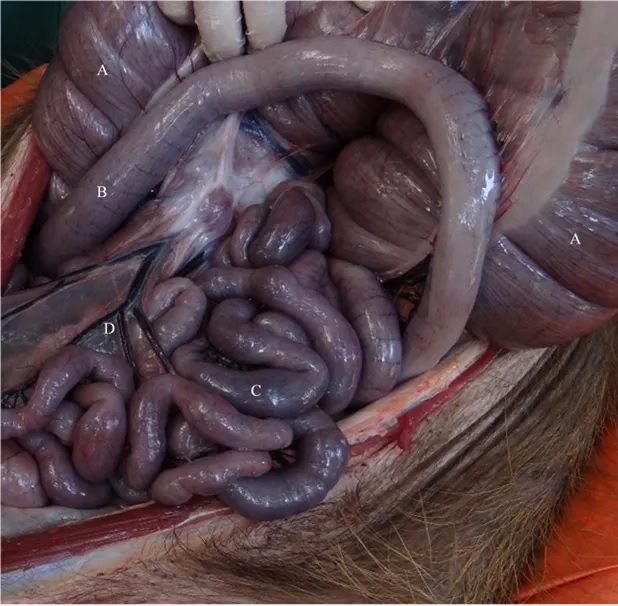Acute Cecal Tympany During Chemical Restraint in Free-Ranging Capybara (Hydrochoerus hydrochaeris) - Iatrogenic Cause and Treatment
DOI:
https://doi.org/10.24070/bjvp.1983-0246.v12i3p117-122Keywords:
bloating, cecal decompression, trans-abdominal catheterization, rodent, anesthesiaAbstract
The occurrence of acute tympany, probable cause and treatment are being discussed for the first time in Hydrochoerus hydrochaeris, commonly known as the capybara. As part of a capybara population control study, adult male and female (n=18), prior to intervention, were physically confined and subsequently chemically immobilized with a ketamine dexmedetomidine (KD) association. Procedures included health exams, biomaterial collection, and ID markings. For surgical events, the animals were maintained under volatile anesthesia with Isoflurane. One animal, during anesthetic recovery, developed tachycardia and tachypnea, with cyanotic mucosa, and a low SPO2. During auscultation and percussion/palpation a taut abdominal wall was recognized. Shortly thereafter, the animal suffered a cardiorespiratory arrest and failed resuscitation. Immediately performed necropsy suggested death by acute respiratory and circulatory failure due to exerted pressure against the diaphragm and compression of major blood vessels, leading to hypoxia and hypovolemic shock, secondary to cecal dilation. Three animals under general anesthesia demonstrated moderate bloating and were treated by trans-abdominal catheterization for cecal decompression, successfully preventing any potential development of severe tympany. Conclusion: During chemical restraint all animals demonstrated bloat of varies degrees, suggesting iatrogenic cause brought about by adverse effects of anesthetic agents. Acute cecal tympany in sedated capybaras must be anticipated and closely monitored to prevent fatal outcome. Trans-abdominal catheterization into the cecum proved effective in treating bloat.


